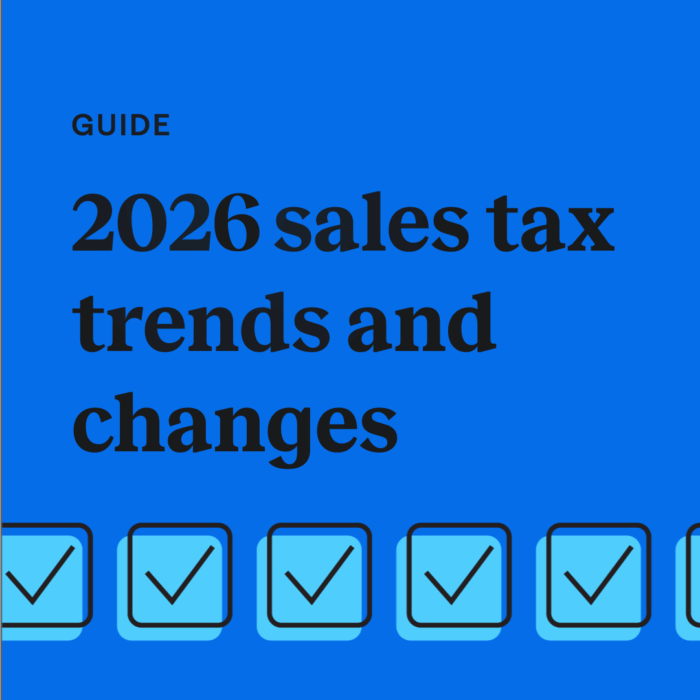VAT in the Digital Age: Implementation plan
by October 24, 2025
The European Union is implementing “VAT in the Digital Age” (ViDA) – a major reform of the VAT system which will mandate e-invoicing and expand tax collection obligations for platforms. The rollout will span a decade, with most important measures taking effect in 2028 and 2030.
While TaxJar supports sales tax compliance in the US, retailers that are considering expanding to new countries should be aware of global tax compliance changes.
To help, we asked an expert from our parent company, Stripe, to help simplify these concepts. Aleksandra Bal is the Global Indirect Tax Technology Lead at Stripe, leading a team focused on developing tax technology solutions and managing indirect taxes across six continents.
What is VAT?
Before we get into the recent VAT reforms, let’s recap what VAT is. VAT stands for value-added-tax, and is generally a broad based tax on goods and services that are consumed in a particular European country. Similar to the US, each country can set their own VAT rates.
Unlike the US sales tax system, the VAT system is a multi-stage tax that is imposed at every step of the supply chain. The VAT is due in the country of consumption regardless of the country of the seller. That makes imports from the US subject to VAT when consumed in Europe. Like US sales tax, VAT rules are complex and can become tedious when applied to specific transactions and cross-border transactions.
What is VAT in the Digital Age?
The European Union’s “VAT in the Digital Age” (ViDA) reform package, approved by the ECOFIN Council in March 2025, is set to bring major updates to the EU VAT system. In September 2025, the European Commission released its long-awaited implementation plan that moves the reforms from concept to execution.
The ViDA reform consists of three pillars:
- E-invoicing and reporting: Mandatory e-invoicing and digital reporting for intra-EU B2B trade.
- Platform economy: Tax collection obligation for platforms operating in the short-term accommodation rental and passenger transport sectors.
- Registration and OSS: Expanding the scope of One Stop Shop (OSS) and reverse charge.
We’ve outlined the list of proposed measures and their implementation date below.
| Proposed measure | Implementation date |
| Electronic invoicing will be the default invoicing method in the EU. Paper/pdf invoices will only be usable with member state approval. Businesses must issue e-invoices according to the European standard. | 2030 |
| All businesses need to issue e-invoices for B2B sales across EU member states. | 2030 |
| Digital Reporting Requirement (DRR) mandates real-time reporting of certain invoice data to tax authorities for B2B sales within the EU. | 2030 |
| Platforms in the short-term accommodation and transport sectors must collect VAT on facilitated sales if the service provider (host, driver) does not provide a VAT number. | 2028 |
| OSS will expand to cover new scenarios, including domestic B2C sales of goods by non-established suppliers, goods with installation, supplies on transport mediums and EV charging. | 2027 – 2028 |
| A new scheme will allow businesses to report cross-border movements of their goods in one member state, regardless of where the goods are transported from. | 2028 |
| The mandatory reverse charge will be extended to all B2B supplies from non-established businesses to VAT-registered customers in the VAT-due country. | 2028 |
| The Small Seller rule will be amended: only sales dispatched from the seller’s country of establishment count toward (and can benefit from) the EU-wide €10,000 threshold. This rule will not be available for sales made from stock held in other Member States. | 2027 |
Which businesses will be affected by ViDA?
Not all businesses will be impacted by ViDA the same way. For example, EU-based businesses that sell goods or services to other businesses in the EU will see the most changes, but non-EU businesses that sell digital services into the EU but have no physical operations in the region won’t be affected.
In some scenarios, ViDA could reduce compliance challenges. For example, electric vehicle charging operators will be able to manage VAT through a single EU registration instead of navigating multiple national systems.
| Type of business | Impact of ViDA |
| Intra-EU B2B businesses | Businesses based in the EU that sell goods or services to other businesses across EU borders will experience the most significant changes. They’ll need to adapt to new requirements around electronic invoicing and digital reporting. |
| Platforms and marketplaces | Online platforms in the short-term accommodation and transport sectors, like Uber and Airbnb, will have to make substantial adjustments. These platforms will be treated as the sellers themselves and will be directly responsible for collecting VAT on every transaction they facilitate. |
| Digital service providers | Non-EU businesses that offer digital services to customers in the EU, but have no physical presence in the region, will not be affected by the ViDA reform. |
The future of ViDA
This reform package is full of updates businesses must consider, and while that can be overwhelming, the European Commission will continue to provide guidance and technical details to ensure businesses understand how to implement these changes. Additionally, the Commission will provide opportunities for regular dialogue with the business community through the reform rollout process to give businesses the chance to share concerns and ask questions.
While TaxJar helps businesses manage their US sales tax requirements, Stripe has a tax solution, Stripe Tax, that can help businesses comply with VAT requirements. You can learn more about Stripe Tax here. If you need help managing your US sales tax obligations, start a free, 30-day TaxJar trial today.
Aleksandra holds a Ph.D., MBA, LLM, and several other degrees in taxation and computer science.








